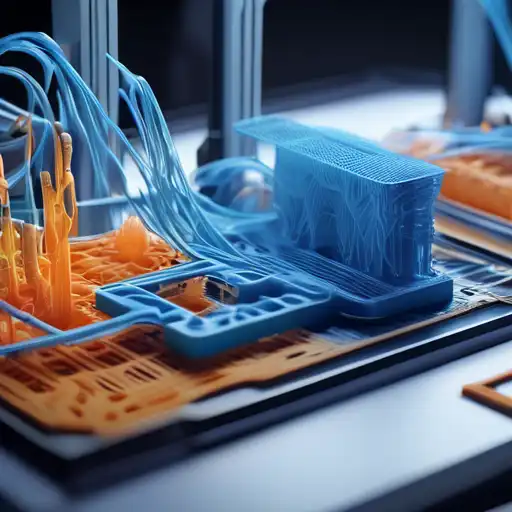The Dawn of a New Manufacturing Era
3D printing, also known as additive manufacturing, is revolutionizing the way we create objects. From prototyping to full-scale production, this technology allows for the creation of complex designs that were previously impossible or too costly to manufacture. By building objects layer by layer, 3D printing opens up a world of possibilities for designers, engineers, and creators across various industries.
How 3D Printing Works
At its core, 3D printing involves the process of adding material to create an object from a digital file. The printer reads the design and lays down successive layers of material until the object is fully formed. This method contrasts with traditional subtractive manufacturing, which involves cutting away material from a solid block.
The Benefits of 3D Printing
- Customization: 3D printing allows for unparalleled customization, enabling the production of items tailored to individual needs.
- Speed: Prototyping is significantly faster, reducing the time from design to production.
- Cost-Effectiveness: By minimizing waste and the need for expensive molds, 3D printing can be more cost-effective for small production runs.
- Complexity and Design Freedom: The technology supports complex geometries that are difficult or impossible to achieve with traditional methods.
Applications of 3D Printing Across Industries
3D printing is making waves in numerous fields, including healthcare, where it's used for prosthetics and bioprinting tissues; aerospace, for lightweight components; and even fashion, for customizable clothing and accessories. The potential applications are as limitless as the imagination of the designers and engineers who wield this powerful tool.
Challenges and Future Directions
Despite its many advantages, 3D printing faces challenges such as material limitations, speed for mass production, and intellectual property concerns. However, ongoing research and development are rapidly addressing these issues, paving the way for even broader adoption and innovation.
As we look to the future, 3D printing stands as a cornerstone of the next industrial revolution. Its ability to democratize manufacturing, reduce environmental impact, and foster innovation is unparalleled. By continuing to push the boundaries of what's possible, 3D printing is not just creating objects—it's creating the future, layer by layer.
For more insights into the latest in manufacturing technology, check out our technology trends section.
